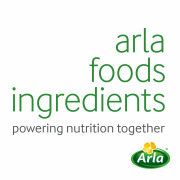News
Whey protein beyond sports nutrition
24 Nov 2019Whey protein is no longer solely the preserve of gym-goers and athletes, as millions of global consumers look for convenient, satiating, protein-packed foods and drinks.
The mainstreaming of sports nutrition has brought whey protein out of the specialist stores and supplements aisles, with many retailers realising that an increasing number of amateur sports enthusiasts are interested in protein-rich foods and snacks, but may be less interested in tubs of protein powder. As a result, products like protein bars, snacks and readymade drinks have found a much wider consumer base in recent years.

As well as this group of active consumers, looking to use protein for fuel and recovery, there is another large group of mainstream consumers interested in protein for weight management and satiety – and whey protein specialists have been tailoring new products for this group over the past several years.
Companies like Fonterra, Friesland Campina, Arla Foods Ingredients and Agropur Ingredients have introduced whey protein ingredients with various textures for use in chocolate bars, as well as in cereal and energy bars, and as inclusions in other products, such as baked goods. Fonterra’s whey protein arm NZMP has released a whey protein isolate for use in clear beverages, while Arla Foods Ingredients has developed a whey protein hydrolysate solution especially for use in sparkling protein waters.
Also in beverages, Arla has introduced a whey protein ingredient specifically for stable, long-life iced coffee. Combining real coffee and whey protein in a ready-to-drink UHT format had been a long-standing technical challenge, but Arla claims that its ingredient has overcome this hurdle, allowing manufacturers to tap into younger consumers’ interest in RTD iced coffee – as well as broader interest in high protein foods and drinks. According to Mintel, 66% of US millennials regularly drink iced coffee.
More generally, protein has become a highly desirable nutrient. The other macronutrients – carbohydrates and fat – still have a reputation as ingredients to limit, but in recent years protein has gone the other way. As its role in satiety in particular has become clear, many consumers see protein as a nutrient that can be consumed without limit.
This conclusion may be questionable from a nutritional perspective, but for food manufacturers, high protein content has become a hot selling point. According to Innova Market Insights, the number of new food and drink products with a protein claim doubled from 2013 to 2017, and over 10% of new products now feature some kind of protein claim. The trend shows no sign of slowing.
Even as plant protein ingredients have boomed, whey protein remains a trusted clean label ingredient, and its complete amino acid profile continues to appeal to many consumers, both in the sports nutrition sector and beyond.



